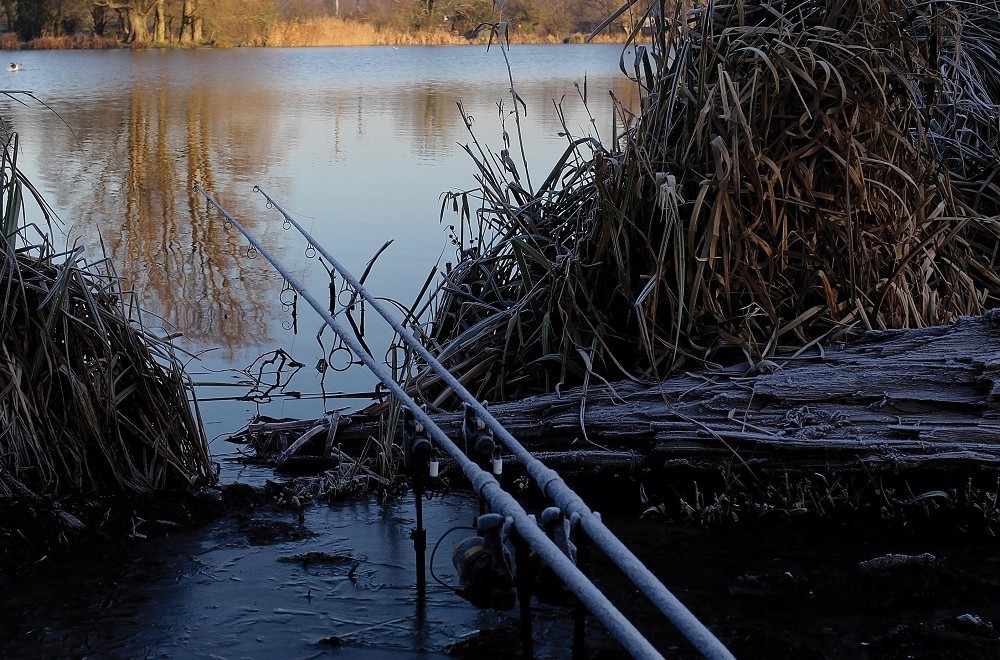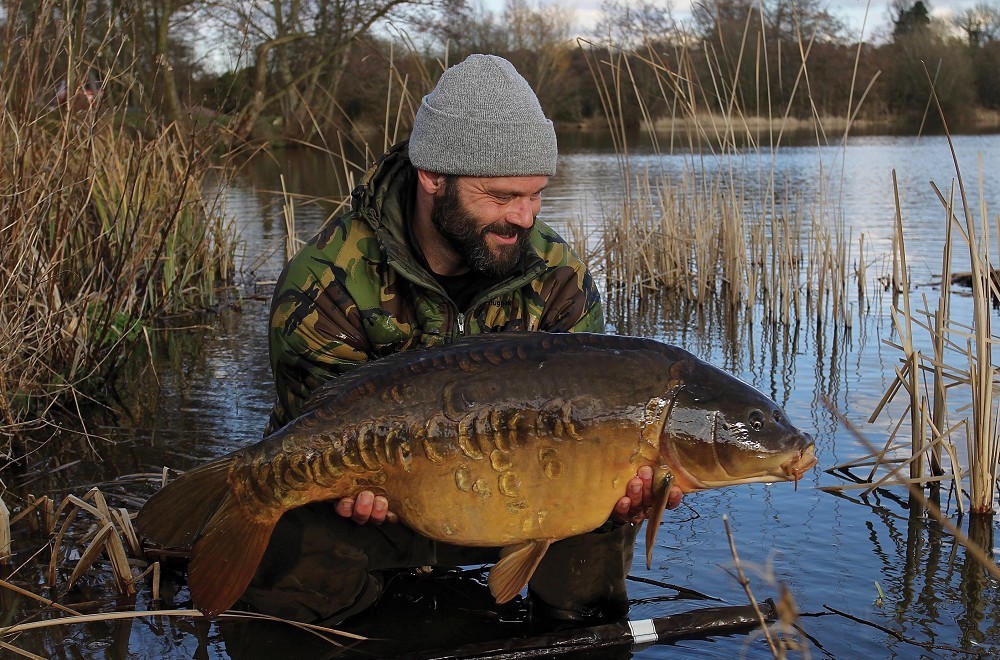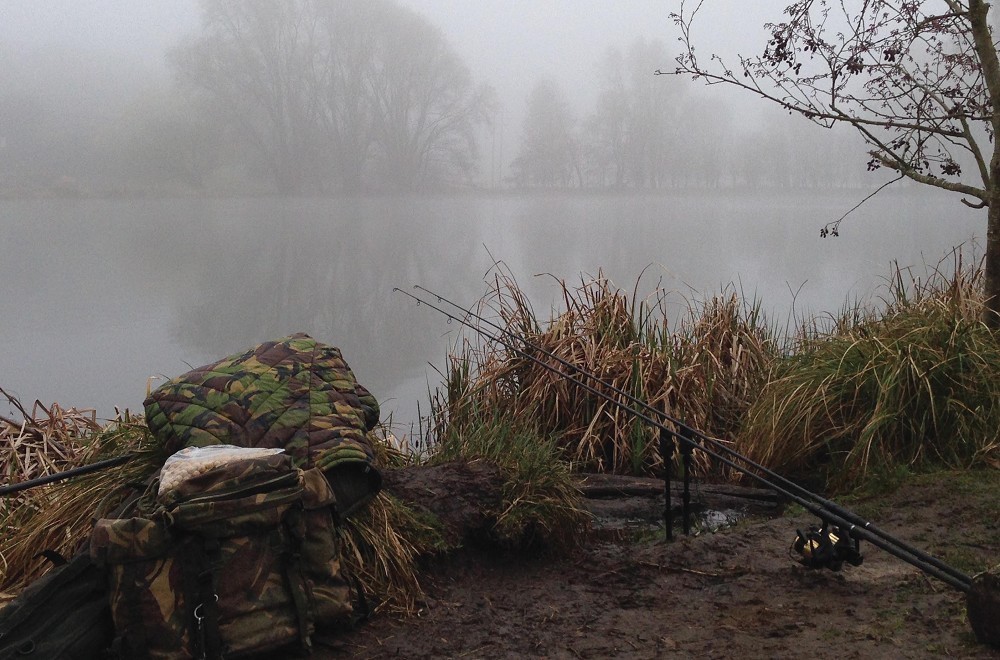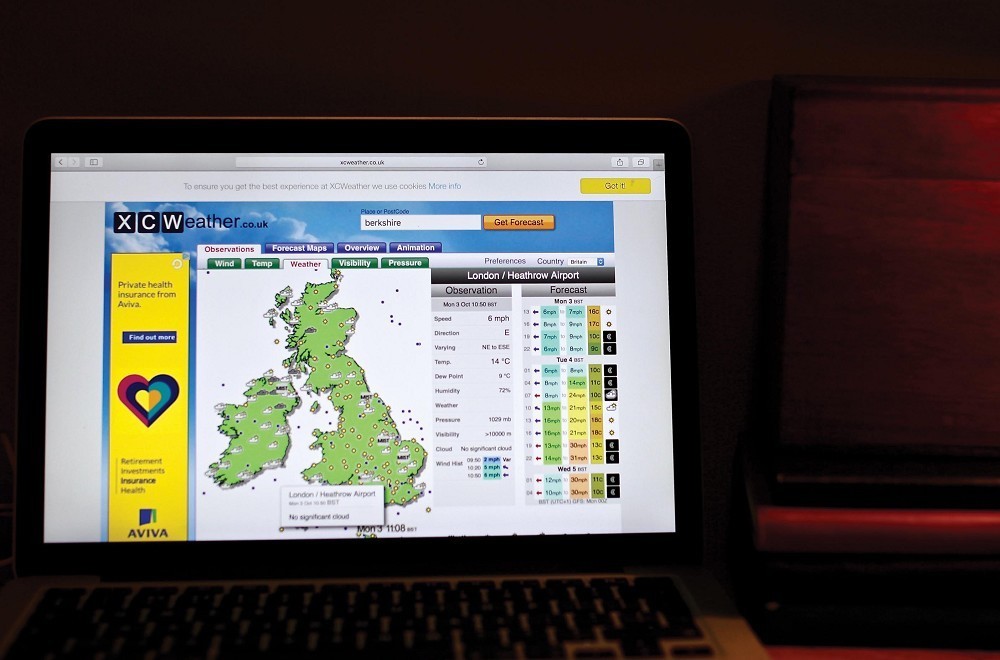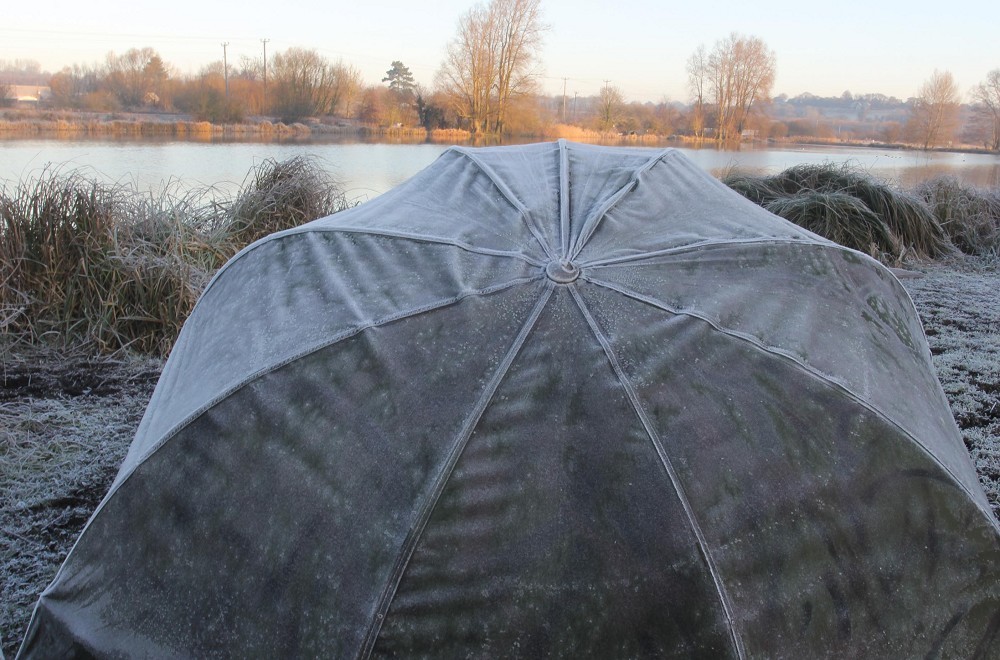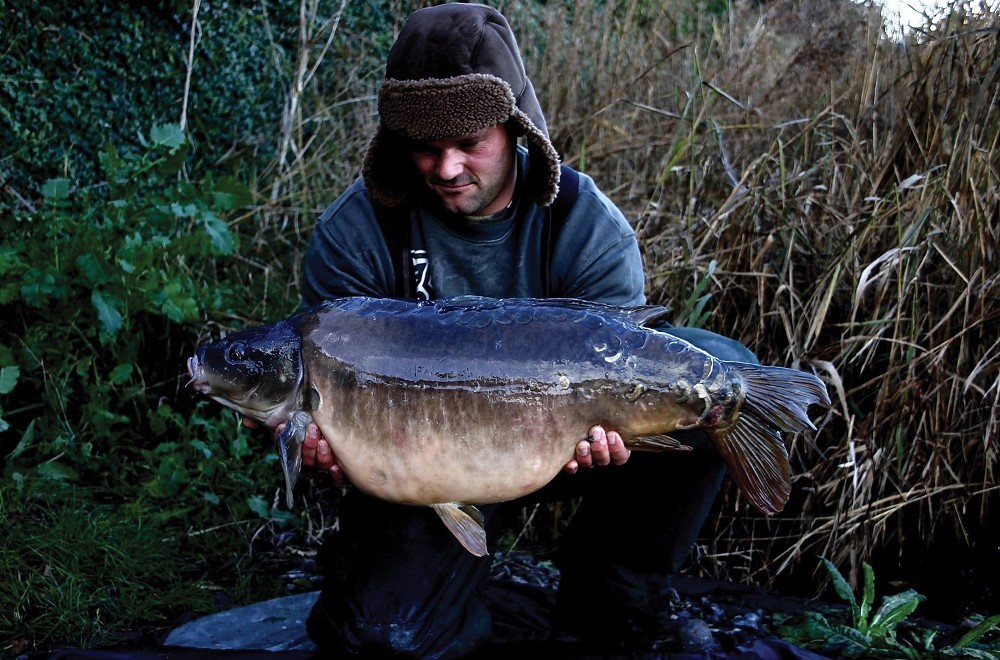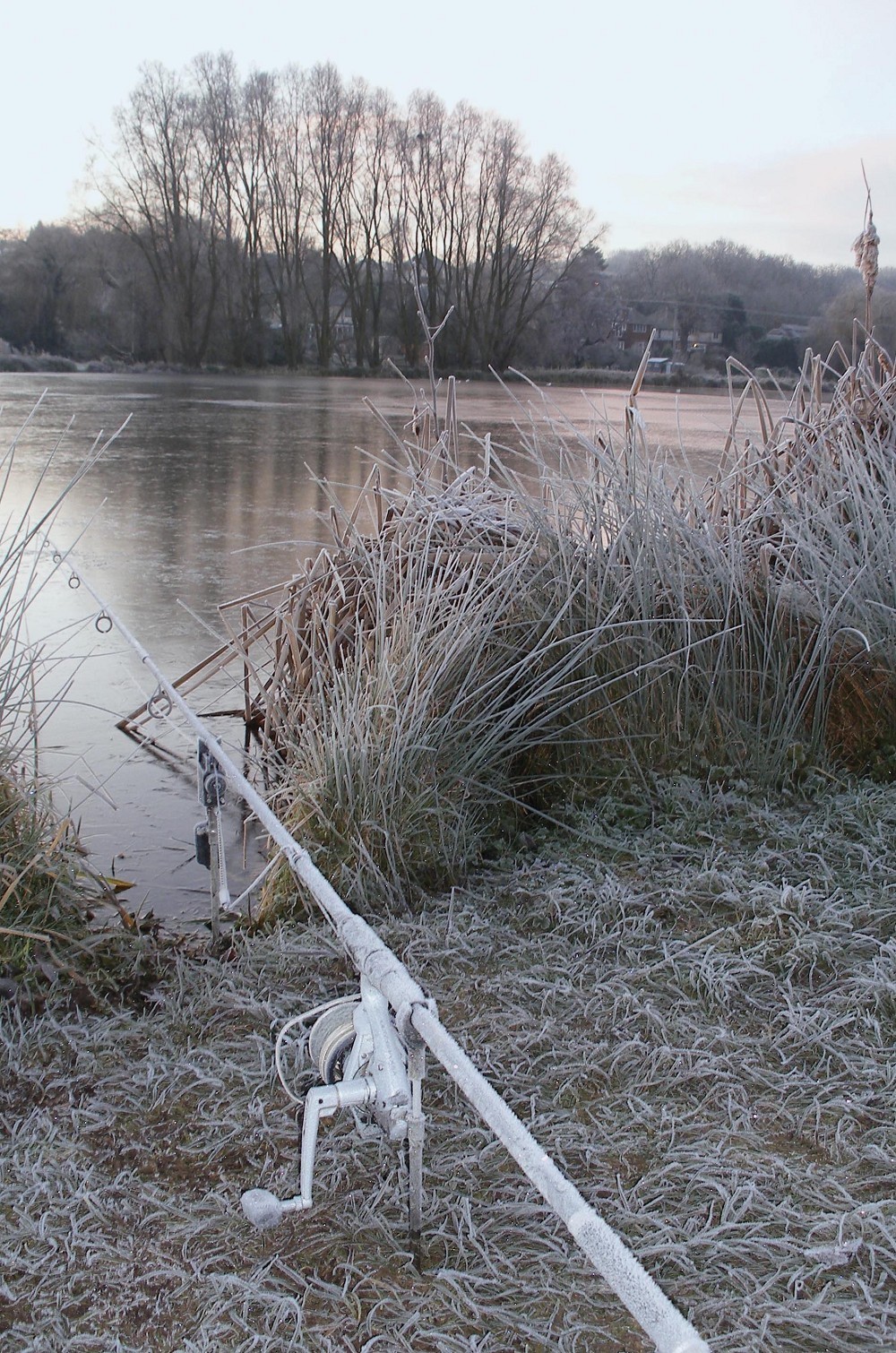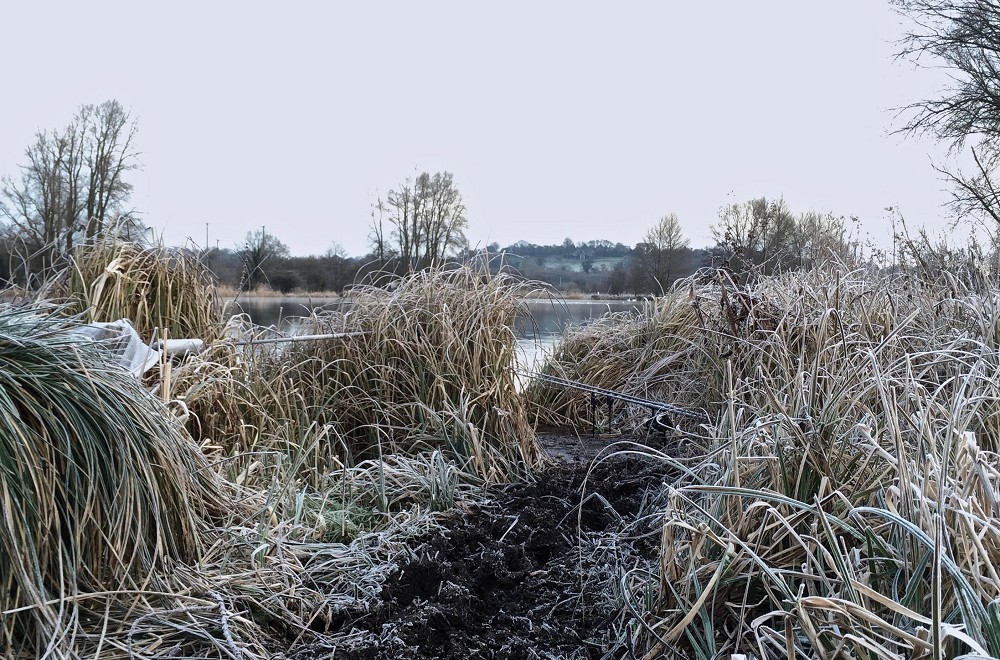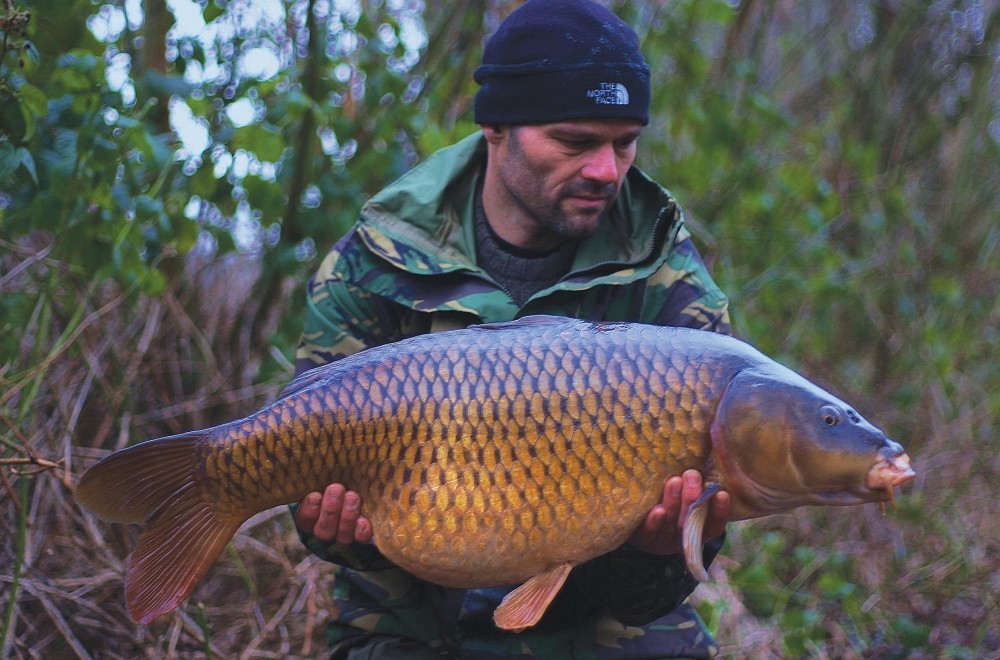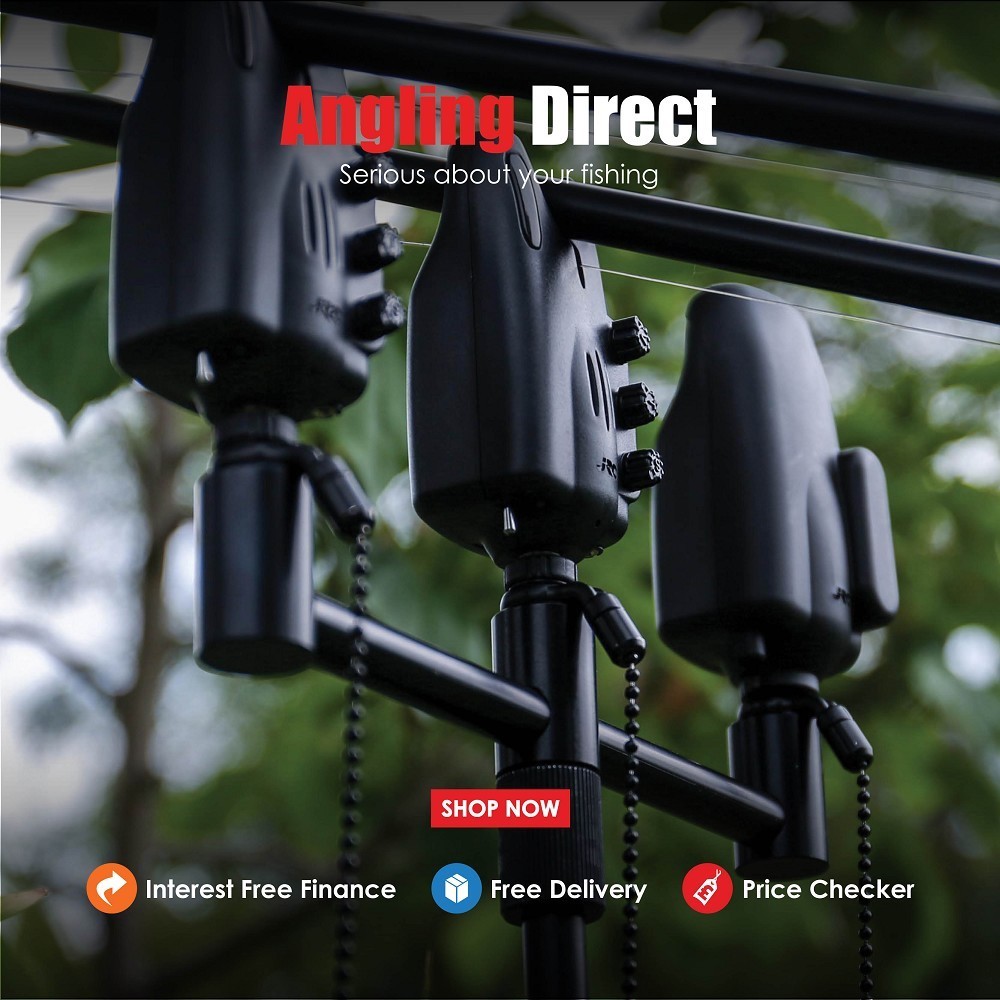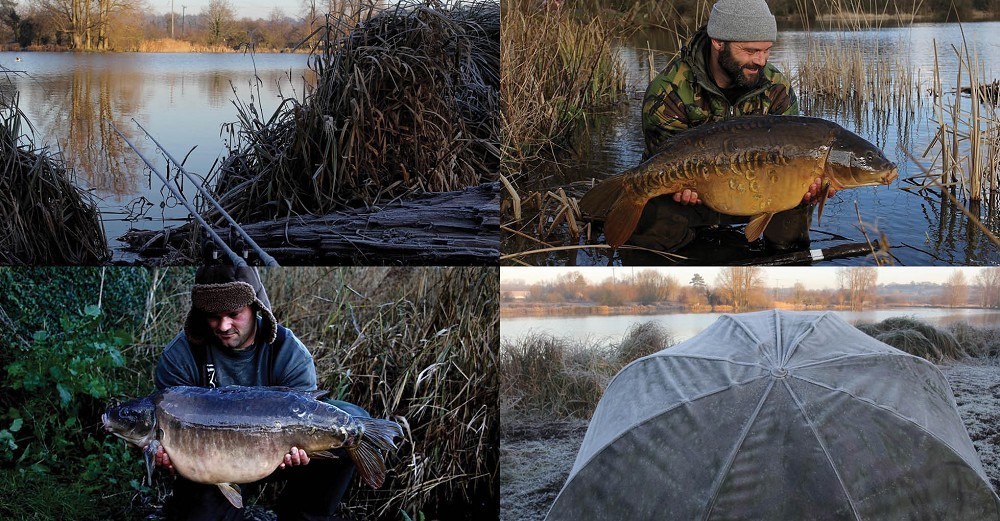
Oz Holness's top 10 winter tips
Winter carp angling is not for the faint-hearted, but with a little thought and pre-planning you can have the very best of times.
Winter carp angling is not for the faint-hearted, but with a little thought and pre-planning you can have the very best of times. It’s not only the challenge of dealing with and overcoming the harsh conditions that makes it so appealing, it’s the reward that comes when it all goes right, possibly at the toughest time of year to really be consistent. The carp are very often in peak condition and look positively stunning in their winter colours. Quite often the banks are that bit quieter and the scenery can be nothing short of spectacular with monochrome skies and the countryside stripped back to the bone. With all this to consider, it’s worthy of the effort required to be there, the thought of a cold water whacker is often enough to see you through those long dark hours of mid-winter. So here are a few of the things I have learned and have kept me going through the colder months, year after year, over the past three decades.
1. Darkness observations
Those seemingly eternal hours of darkness man! There no getting away from it, once the clocks go back and autumn slips slowly into winter one of the harshest adjustments we make is to the lack of daylight hours. When it comes to winter carp angling it is just part of the deal so the best way forward is to use the darkness as your new best friend! The best of it is, on many waters I’ve fished over the years, those old carp are often way more active at night in winter than they are during the day. It may not be the case that they are feeding at those times but it’s a dead giveaway as to their location on the pit. Quite often they can be heard sloshing over in the early hours of the morning even on the coldest of nights. The Tonford pit where I spent many recent winters angling was a prime example. Quite often I wouldn’t even set-up until late in the evening, often just walking until they gave up their location. I was always prepared to move, even in the early hours of morning and on plenty of occasions those moves would result in a carp on the bank at some point the next day. Talking of which…
2. Bite times
One of the interesting things about winter carp angling is the seemingly precise and predictable bite times that occur throughout the coldest months. Once located, the carp seem to have very short and distinct feeding spells and this can be of great benefit if the water is local to you. Obviously these times change and move either forward or back as the light levels change and the water warms up, but in the depths of winter it can be very easy to take advantage of, once learned. All the work leading up to this knowledge is time well spent and as the feeding spells reduce in length and frequency you can quite often fish short and productive trips of just a few hours and take advantage of your knowledge. Either fish short hit and run sessions or at least time a session to take into account at least two of these more productive times.
3. Venue choice
One of your main considerations when winter angling is venue choice. Of course, I’m not taking into account the lads fishing year long campaigns and just gruelling out the winter months as a matter of course. If you are picking a venue purely for angling in the colder months it makes sense to pick the right one to suit your requirements. Having fished a variety of different venues myself over the years I have a fair idea of what works and what doesn’t and of course it’s all down to personal choice.
My own preference these days is for a venue that isn’t heavily weeded throughout the summer and autumn period. From experience I found the weedier the venue, the worse it fished in the winter. There are the odd exceptions but as a general rule I would avoid! Also the deeper (say 10ft plus) venues, although fishing well that little longer in the autumn tend to shut down and stay that way once cooled. Small or intimate sheltered venues can also suffer if they don’t catch the wind easily, even with cold water holding more oxygen, the wind factor is very important to the turn over of surface layers and distribution of any temperature changes occurring at atmosphere.
As a rule I would look towards the shallower pits with a decent stock density and importantly, one with winter form! These places will respond to temperature rise more quickly and if the pit has form, then no doubt others will be angling helping to keep the fish moving about and looking for food. Moving water is king in winter and if you have a local river or a lake that has both an inlet and outlet these are more than worthy of consideration.
4. Weather
Weather has a vast impact on all aspects of angling and all throughout the year. My findings over the winter months have come from my own experiences and those of my friends as sharing information and weather data definitely helps in the understanding of what works and what doesn’t.
Most of it is common sense and there is nothing better than working it all out and getting a result. Carp are cold-blooded and as such are the same temperature as their surroundings. Once the water temperature drops to below ten-degrees the metabolism has slowed right down
and although the carp will feed in all but the most severe temperatures, the amounts are minimal and they can lay torpid for lengths of time.
As with any natural event, weather changes can make vast and rapid differences to the environment and this is also the case with the waters in winter. As quickly as they cool, mild wet airflows from the Atlantic can cause subtle changes to bring things back in our favour. Two things I have noticed are that first, it’s easy to be premature and it’s always best to let the weather do its job; two or three days of a nice warm low pressure system is perfect before getting out angling after a cold snap. Secondly, I’ve experienced some good results timing trips to coincide with rapid temperature drops, so that worth bearing in mind also.
5. Be comfortable
There’s no point undergoing a winter session to find a few hours in that you’re cold, wet or uncomfortable. There’s absolutely no need these days to suffer whilst out on the bank and the obvious reason we all go is to enjoy ourselves. I’ve always strived to fish in a minimal style but efficiency and performance is key to remaining effective in the cold months. There is a whole load of awesome kit available these days to make life easier and there is no excuse to be cold and wet when out on the bank.
I still use my brolly system throughout the winter but I’ve softened a little these days and use a small groundsheet to stop the damp rising into the bedchair. Couple that with the essentials of a hot water bottle and a small terrier to keep you warm, the evenings are all the better for it! Merino wool socks, Long Johns and long sleeve T-Shirt are the best you will get and along with some decent waterproof outer clothing you can layer up between and stay comfortable.
One thing I have found personally is that the Coleman stove is king when the temps really plummet. I love to have a big canister of fuel and the old stove will be up and running through the evenings for plenty of tea and a lovely warm glow. (Never leave or use in a confined space i.e. in a zipped up bivvy!)
6. Special hookbaits
I love making my own special hookbaits throughout the year but always have a few pots of ‘favourites’ that seem to work ever so well for me come the colder months. The secret is to get something together that you’re confident in using and has a proven track record for cold water captures. From my own findings, an ester-based acidic fruit and alcohol combination is highly soluble in cold water and I base this on a vivid pink base mix. The other favourite of mine is a spicy combination of emulsified essential oils with glycerine and fruit esters. This second combination is rolled in bright white and these two baits form the basics of my pop up approach. I will often use these baits as singles, cast to showing fish or a disturbance or fished over a lightly pre-baited area.
7. Boilies and liquids
Over the years I have found the use of smaller baits and bait items more beneficial in the winter. With nuisance fish less active I found I could get away with it and the results were interesting. Crumbing boilies and using a groundbait formulated from the base mix it was easy to add a variety of extra stimulants to fire up the water column. Alongside the solubility factor and the ability to keep the fish moving about for that bit longer it was far harder for the birds to wipe out all your hard work and effort.
There are so many liquids available these days that can transform and activate the swim you’re fishing and these can be applied in numerous ways. The most obvious is a solid PVA bag and these can be filled with various products to be delivered to the lakebed. The other ways of achieving a similar result is the use of the groundbaits and crumb we spoke of earlier. Some examples of what to use are: liquid liver, Betaine, liquidised corn and hemp oil. There’s plenty of options and the possibilities are endless.
8. Paste
One thing I never go without on my winter trips is a pot of boilie paste. The nutritional qualities and solubility factor of the ingredients is a real edge, nothing is devalued and the attractors are free to begin work immediately leaking off all the goodness and food signals into the water column. I often wrap my favourite double 10mm bottom baits in a nugget of paste before casting and will always Spomb a small handful of paste balls into the swim on a regular basis to keep the attractors in the zone. Small nuggets can be meshed in PVA to flick out in the catapult. Paste is definitely a winter winner!
9. Maggots
Bit of a contentious one as they can dominate a venue if used in large quantities. I don’t really think they benefit the carp or the angling as everything is scaled right down and it can be hard to get a bite on anything else. However, used sensibly there is no doubt the effectiveness of the maggot and the carp just love ‘em! I usually take the maggot with me when the temperatures have been really low and they just seem to add a little bit of something when mixed with the other baiting scenarios I’ve mentioned. Really good if you are fishing within catapult range and can drip-feed little-and-often. I’ve seen the effect they can have and so they had to get a mention.
10. Depth and Zigs
There’s no denying it: Zigs have dominated many waters in the colder months and although it’s never my first line of approach it can really pay off to learn a little about Zig angling. If you ever get the chance to observe cold-water carp, they spend a good deal of their time well off the bottom. Whatever the reasons, be it water temperature, comfort, air pressure, oxygen levels, it is just the way it is. There is no doubt that Zig angling should be a string to your bow in the winter and one thing is for sure, it’s an interesting dimension and one that keeps you active and guessing until you get it right. Once you’re in the zone with location, it’s a simple case of getting the depth right and that can be as critical as
the presentation of the rig itself. Definitely one to get you out of trouble when the going gets tough.



